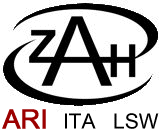Introduction to GPU Accelerated Computing WS 2021/2022 Block Course with Exercises
| NEWS: |
Feb. 19, 2022: Sorry, registration is closed now, the course is full. The course will be held FULLY online. All participants registered by now are accepted. Link to tutorial groups: https://uebungen.physik.uni-heidelberg.de/v/1382 (enrolment closed now). Block Course, February 21-25, 2022; Begin: Monday, Feb. 21, 10:15; End: Friday Feb. 25, 13:00 Schedule: Morning Lecture, Mon-Fri 10:15-13:00; Afternoon Hands-on Exercise: Mon - Thu 14:15-17:00; Fri: none Lunch Break: daily 13-14 Your personal laptop or desktop should be used in the course to connect to our GPU supercomputer (kepler cluster of ARI/ZAH). Please prepare to use ssh, do you know how to do this? Under Linux it is quite easy, but under Windows you may have to install a putty client (see also https://www.wikihow.com/Use-SSH and https://putty.org/ ). All numerical experiments will be done on the kepler cluster.
zoom rooms to be used: published in the Rocket Chat . |
| Files: |
Lecture pdf files for download:
Starting Instructions for Lecture and Tutorials (Feb. 21)
|
| Summary: | We will learn the basic technique to use GPU (graphical processing units, graphics cards) for numerical accelerated computing at the example of CUDA - an extension of C. The course is inspired by Jason Sanders Lecture, but not identical to it. |
| Lecturer: |
Prof. Rainer Spurzem;
ZAH/ARI, Mönchhofstr. 12-14, 69120 Heidelberg Email: spurzem@ari.uni-heidelberg.de |
| Teaching Assistants: |
Ramesh Rahul, rahul.ramesh@stud.uni-heidelberg.de Peter Lysakowski, peter.lysakovski@uni-heidelberg.de Rainer Spurzem, spurzem@ari.uni-heidelberg.de |
| Time and Place: | Lecture: Monday - Friday, February 21-25, 2021: 10:15 - 13:00; Exercises: Monday - Thursday, February 21-24, 2021: 14:15 - 17:00; (no exercises Fri afternoon!) |
| Requirements: | Basic knowledge of a higher programming language such as C, C++,
Fortran or similar
|
| Topic: | We will learn the basic technique to use GPU (graphical processing units, graphics cards) for numerical accelerated computing at the example of CUDA - an extension of the C programming language. Also some general ideas of parallel programming will be discussed. GPU accelerated parallel computing is a technique used in many areas of computational physics and astrophysics. After the basic introduction one or two application examples will be presented. This is a five day block course with lectures in the morning and practical hands-on exercises in the afternoon. Topics: Parallel Computing, GPU Hardware, Elements of CUDA Language, Data Transfer, Vector and Matrix Operations, Simple Application for N-Body Problem. |
| Literature: |
CUDA by Example, of Jason Sanders and Edward Kandrot . Our course is inspired by this book
and lectures of the authors, will cover much less details, but go for some topics beyond the content of
the book; also we will learn an example astrophysical application.
|
(Responsible for contents: Rainer Spurzem )

